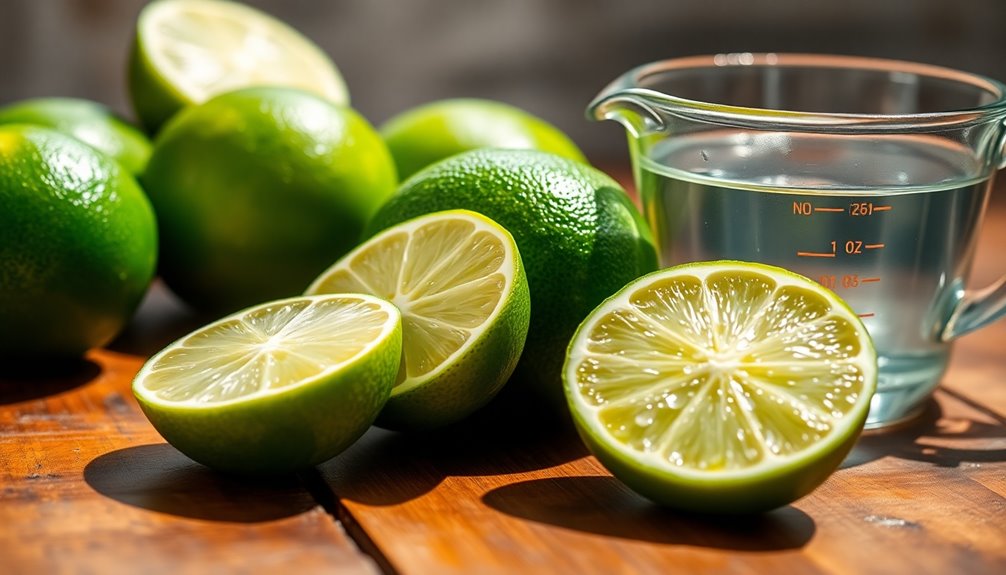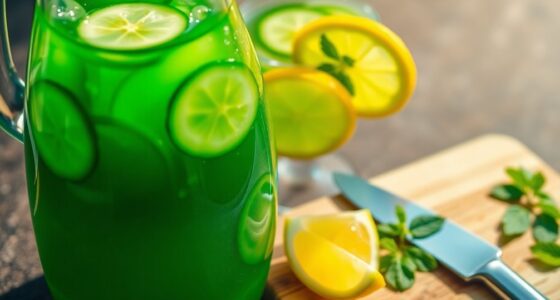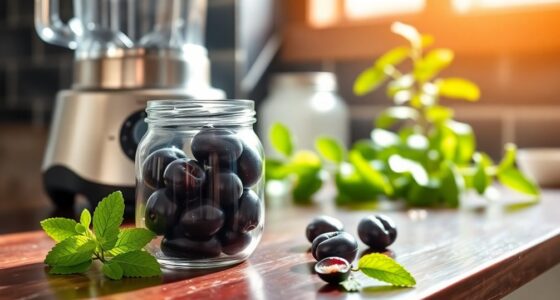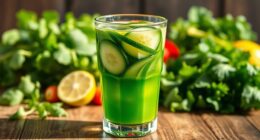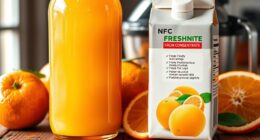If you need 1 ounce of lime juice, it depends on the type of lime you use. Typically, one medium Persian lime will get you that amount easily. However, if you opt for Key limes, you'll need about 3 to 4 of them for the same yield because they're smaller and juicier. Picking the right limes can significantly affect your cooking. Stick around to discover more tips for maximizing your lime juice extraction.
Key Takeaways
- One medium Persian lime typically yields about 1 ounce of juice.
- For Key limes, you need about 3 to 4 limes for 1 ounce of juice.
- Heavier limes tend to contain more juice, so choose firm ones.
- Freshness is important; fresher limes yield better juice extraction.
- Knowing lime yield helps in planning recipes and reduces kitchen stress.
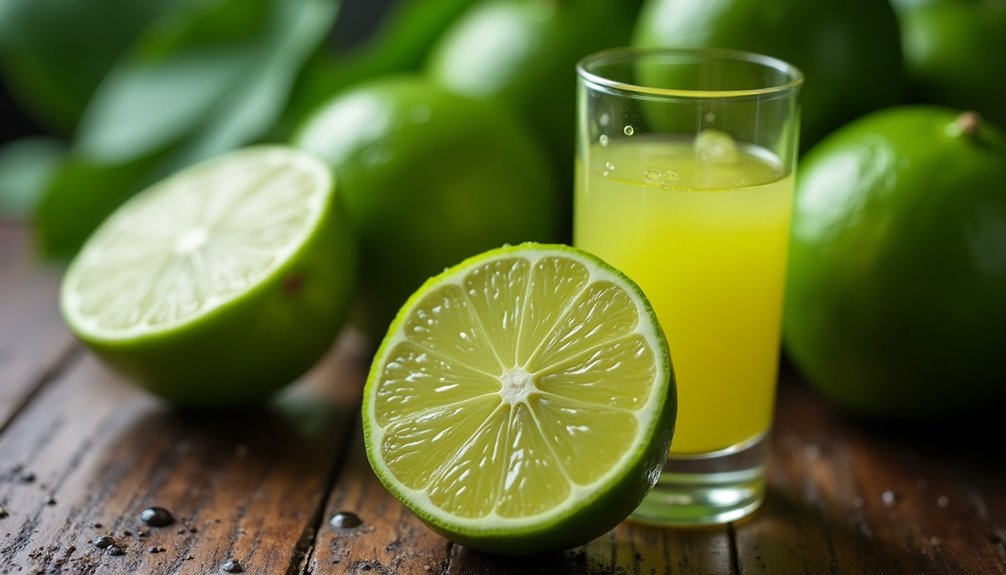
When you need 1 ounce of lime juice for a recipe, it's good to know that a single medium Persian lime usually does the trick. Persian limes are the most common variety found in grocery stores, and they pack a punch with their fresh, zesty flavor. When you squeeze one, you'll typically get about 1 ounce of juice, which is equivalent to 2 tablespoons. This makes it easy to plan your lime juice needs without any guesswork.
If you're using Key limes, though, you'll need a bit more effort. Due to their smaller size and higher acidity, you'll find that it takes about 3 to 4 Key limes to yield the same 1 ounce of juice. This can be a bit of a hassle if you're in a hurry, but the unique tartness of Key limes can add a special touch to your recipes. Just keep in mind that if you're aiming for a consistent flavor and quantity, sticking with Persian limes is usually the way to go.
When you're preparing to extract juice from your limes, selecting heavier fruits can help ensure you get the maximum yield. A heavier lime generally contains more juice, so don't hesitate to give them a little squeeze before buying. You want to pick those that feel firm and heavy for their size. This little tip can save you from needing to grab an extra lime or two when you're in the middle of a recipe.
Getting fresh lime juice is essential for many dishes and drinks. Whether you're making a tangy marinade, a refreshing cocktail, or a zesty dessert, the right amount of lime juice can elevate your dish. And knowing how many limes to use takes the stress out of your cooking process. Imagine you're preparing a vibrant ceviche or a classic key lime pie; just one medium Persian lime for each ounce of juice you need will keep your recipes on track.
It's also worth mentioning that lime juice can be a great addition to dressings and sauces, adding brightness and acidity that enhances flavors. So, when you're in the supermarket, remember that a single medium lime is your friend for most recipes requiring 1 ounce of lime juice.
Frequently Asked Questions
How Many Limes for 1 Ounce of Lime Juice?
When you're looking to get the right amount of lime juice for your recipe, it's important to know how many limes you'll need.
Generally, one medium Persian lime gives you about 1 ounce of juice. If you're using smaller Key limes, you might need 2 to 3 of them since they're smaller and more acidic.
Always check the size of the limes you're using to ensure you get enough juice for your dish!
How Much Juice Is in 2 Limes?
When you slice into two limes, think of sunshine bursting forth, releasing a tangy treasure.
Typically, those two medium limes can yield about 2 ounces of juice, brightening up your dishes or drinks.
Of course, some limes might surprise you with a little extra or a little less, but firm, smooth-skinned limes usually promise the best results.
How Much Is 1oz of Lime Juice?
When you need 1 ounce of lime juice, you're looking at about 2 tablespoons. It's a manageable amount for many recipes.
To get this, simply juice one medium lime, as it usually provides enough juice. If you're using smaller limes, though, you might want to grab one and a half or even two, depending on their size.
How Many Lemons for 1 Oz of Juice?
To get 1 ounce of lemon juice, you'll typically need about two-thirds of a medium lemon.
If you're using a smaller lemon, it might take a bit more. A half of a medium lemon usually provides enough juice, so when you're juicing, keep that in mind.
Conclusion
To squeeze out 1 oz of lime juice, you'll typically need about 2 to 3 limes, depending on their size and juiciness. Just like a sponge soaking up water, the lime's flesh holds onto its tangy essence, releasing it only when you apply pressure. So, next time you're mixing a cocktail or dressing a dish, remember this simple rule. With a few limes in hand, you'll easily achieve that zesty flavor you crave!
Cindy thoroughly researches juicing trends, techniques, and recipes to provide readers with practical advice and inspiration. Her writing style is accessible, engaging, and designed to make complex concepts easy to understand. Cindy’s dedication to promoting the advantages of juicing shines through her work, empowering readers to make positive changes in their lives through the simple act of juicing.

